
Eye-Hand Coordination: A Guide to Mastery
Introduction
In the myriad of complex human abilities, one often slips under the radar despite its profound impact on our daily tasks: eye-hand coordination. At its core, eye-hand coordination refers to the synchronized control of our ocular and manual movements, allowing us to perform tasks as simple as picking up a pen to as intricate as playing a musical instrument or performing surgery. Although many might not give it a second thought, it’s this very synchronization that makes so many facets of our lives seamless and efficient.
Every time we tie a shoelace, sketch a drawing, or catch a flying ball, we’re relying on this intricate dance between our vision and our hand movements. Yet, for all its ubiquity, the potential to harness and enhance this coordination often remains underestimated. In this guide, we’ll dive deep into understanding, appreciating, and mastering eye-hand coordination, showcasing its pivotal role in both common tasks and outstanding feats.
Grasping Eye-Hand Coordination
Imagine standing on a serene beach, toes sinking into the warm sand, as you watch a child chase a kite. The child’s eyes follow the kite intently, while their hands and arms move in perfect synchronization, tugging the string, making the kite dip and soar. This visual, though simple and everyday, exemplifies the intricate dance of eye-hand coordination in action. But what exactly is happening behind the scenes in such instances? Let’s dive in.
- Definition and Importance: Eye-hand coordination is the synchronized control and processing of visual input (what we see) and hand movement to execute a task. It’s not just about how quickly we react to what we see but how accurately our hands respond to that visual stimulus. This synchronization is crucial in tasks that range from the mundane, like buttoning a shirt, to the complex, like playing a fast-paced video game or driving a car in heavy traffic.
- The Brain’s Role: The brain is the maestro of this complex symphony. When our eyes perceive an object or movement, the visual cortex in the brain processes this information. Simultaneously, other parts of the brain related to motor skills, like the cerebellum and the basal ganglia, start preparing our hands for action. This intricate neural network allows our hands to respond accurately to the visual cues.
- Developmental Perspective: Eye-hand coordination begins to develop early in life. Babies start by simply staring at their own fingers, gradually progressing to reaching out for objects. By toddlerhood, they can grasp objects, stack blocks, and scribble – all significant milestones in eye-hand coordination. Throughout childhood and into adulthood, these skills continue to refine and can be honed further with specific training.
- Factors Influencing Coordination: Several factors can influence one’s eye-hand coordination:
In essence, eye-hand coordination is a testament to the body’s remarkable ability to integrate visual and motor functions seamlessly. While we often take it for granted, understanding and harnessing this capability can lead to enhanced performance in numerous fields, from athletics to arts and beyond.
Importance of Eye-Hand Coordination
Eye-hand coordination, sometimes termed hand-eye coordination, is one of those background skills we often don’t consider until faced with a task that challenges it. However, its impact and importance touch almost every facet of our lives. From the time we are infants reaching out to grasp a parent’s finger to older adults navigating daily tasks, this skill underpins our interactions with the world around us. Let’s shed some light on why eye-hand coordination is so pivotal.
- Daily Living Activities: At the most basic level, we rely on eye-hand coordination for everyday tasks:
Pathways to Improvement
Developing and honing eye-hand coordination is a continuous journey. While we naturally develop this skill as children, it can be further refined and even regained if diminished. Several pathways offer both fun and practical approaches to improvement. Let’s dive into these pathways and understand their contributions.
- Engaging in Skill-Based Sports:
Athletics Success Stories in Eye-Hand Coordination
The world of sports offers compelling examples of how exceptional eye-hand coordination can lead to unparalleled success. Let’s dive into the stories of three superstars whose mastery in this domain has made them legends in their respective sports.
- The Sharpshooter: Steph Curry
- Story: Stephen Curry, often hailed as the best shooter in NBA history, wasn’t always the towering figure he is today. Overlooked by major colleges and doubted by many because of his size, Curry’s extraordinary eye-hand coordination transformed his game.
- Eye-Hand Coordination’s Role: Whether it’s shooting from beyond the arc or navigating through a defense, Curry’s ability to see, process, and act with his hands, often releasing the ball within milliseconds, is unparalleled. This skill, combined with his rigorous training and relentless work ethic, has made him a two-time MVP and multiple-time NBA champion.
- The Ice Maestro: Sidney Crosby
- Story: Sidney Crosby, captain of the Pittsburgh Penguins, is considered one of the greatest hockey players of his generation. From a young age, he showcased a knack for understanding the game and controlling the puck.
- Eye-Hand Coordination’s Role: On the ice, Crosby’s exceptional eye-hand coordination allows him to control the puck, dodge defenders, and score with precision. His skill in deflecting pucks mid-air into the net or executing perfect passes demonstrates the vital role of coordination in his success.
- The Gravity-Defier: Simone Biles
- Story: Simone Biles, with her collection of Olympic gold medals, stands as the most decorated gymnast of all time. Her routines are a blend of power, grace, and intricate maneuvers that leave spectators in awe.
- Eye-Hand Coordination’s Role: In gymnastics, where a split-second mistake can lead to severe injuries, Biles’ flawless coordination stands out. Whether she’s on the balance beam, the floor, or vaulting, her ability to synchronize her sight with intricate hand placements and body movements results in performances that are nothing short of art.
Conclusion
In today’s fast-paced world, the art of synchronization between our eyes and hands plays an indispensable role, stretching beyond just the realms of sports. As we’ve seen from the captivating journeys of elite athletes like Steph Curry, Sidney Crosby, and Simone Biles, the mastery of eye-hand coordination can lead to groundbreaking achievements. This synchronization is a testament to the untapped potential within us, awaiting its due diligence of nurturing and refinement.
Whether you’re aiming for professional greatness or simply wish to enhance daily functions, the journey to improve your eye-hand coordination is a worthy pursuit. Its benefits permeate numerous aspects of life, from executing tasks with precision to enjoying leisure activities with increased proficiency.
Shoulder Strain, WHAT IS IT?
The rotator cuff is often the problem in shoulder strain injuries, including impingement syndrome and glenoid labrum tears. Rotator cuff tendinopathy is a microtrauma/overuse injury which is typically caused by training programming errors, excessive weight progression, and improper form.
“If the rotator cuff is weak, fatigued, or simply not properly engaged, the upward pull of the deltoid will often pinch the supraspinatus (top portion of the cuff) up against the underside of the acromion (top part of the shoulder blade that meets up with the collar bone. This will often result in some swelling and inflammation of the tendon, possibly some swelling and inflammation of the subacromial bursa (little cushion-like structure between the cuff and acromion), and thereby put the squeeze on the supraspinatus while the shoulder is in motion, thus driving continued discomfort.
For some lifters, the cuff may eventually begin to fray by this pinch and rub cycle, leading to degenerative tears or partial tears of the cuff.
RISK FACTORS
Consider the barbell overhead press: Though not recommended, it can be performed with the bar behind the head. When this form is used, excessive stress is placed on anterior structures, like the supraspinatus.
It is recommended to be careful while performing behind-the-neck military presses and other exercises where the arm is abducted and externally rotated.
RECOMMENDATIONS
it is suggested to train the rotator cuff itself to minimize injury risk. The key is generally to train the rotator cuff with resistance below the level that will elicit too much work from the deltoid and pectoralis muscles. Also, don’t forget to work the scapular stabilizers: the trapezius and rhomboids.
- Inflammation phase: no pressing motions, upright row, or lateral raises. Lat pulldowns (to front of head) are usually OK.
- Repair phase: begin pressing motions, but use underhand (supinated) grip and low weight. Avoid fly-type exercises.
- Remodeling: no explosive exercises, begin non-pressing motions (e.g., lateral raise), transition to pressing motions. Upright row might still be problematic as it places the shoulder in an unnatural, impinged position at the top of the motion.
Low Back Pain WHAT IS IT?
Low back pain can result from a strain of the muscles surrounding the spine due to overuse, bulging or severely damages spinal discs, or a macro traumatic injury to the disc. Spinal fractures from weightlifting are uncommon but not unheard of, including a chronic form of stress fracture called spondylolysis, as well as an acute compression fracture of one of the vertebral bodies.
RISK FACTORS
A few of the risk factors for back injuries include position of the back during a weightlifting exercise, the amount the lifter can (or can’t) engage the entire core to support the back, pre-existing back issues, and daily habits unrelated to the gym. Jobs with prolonged sitting as well as jobs with heavy lifting can both pose risks to the lumbar spine.
During a lift, if you’re using too much weight and your back rounds, you might’ve injured your back. Severe, unrelenting pain, inability to move the muscles of the legs, and trouble controlling bowel/bladder function, are indicators of an injury. Pain running down the back of the thigh toward the lower leg often indicates irritation of the sciatic nerve, but could also be caused by a muscle spasm in the low back or glutes.
RECOMMENDATIONS
The inflammation phase (injury is stabilized) of all musculoskeletal injuries is 5-7 days, and during this time it is suggested to avoid Romanian deadlifts (RDL), overhead squats, weighted squats, and all twisting motions. The repair (tissue formation begins) phase starts up to seven after the injury and can last up to two months. RDLs with light weight are OK during this phase, but avoid good mornings and Olympic lifts such as the hang/power clean. The remodeling phase (type 1 collagen production) can last anywhere from 2-4 months to a year, and we recommend adding the good morning exercise and slowly increasing weight with squats and integrating Olympic movements.
If you need help with back pain we recommend visiting our Physical therapy clinic, The Human Performance & Wellness Center.
“Lifting with a well-positioned, neutral-posture spine goes a long way to minize the risks of low back injury,” Mendler adds.
There are so many reasons why personal trainers are essential to achieving fitness goals, whether they be weight loss-based, sports-driven or for athletic purposes. Here, we’ve put together the most critical reasons why you should have a personal trainer, as well as the benefits that you are likely to achieve by working with one.

They have the power to educate
One of the primary reasons that someone should have a personal trainer is that they can educate you on all aspects of health, fitness and exercise. Knowledge is power and when it comes to your fitness goals, having a proper understanding of what is required for you to reach those goals is incredibly empowering.
Your personal trainer will be able to help you become further educated on how your nutrition plays a role in your fitness journey, what exercises target which muscles, the correct exercise form and so much more. Being able to turn to a fitness professional for any questions you have rather than turning to Google will result in detailed, educated and personalized answers that will help you succeed.

They help perfect your form
Having an educated personal trainer beside you to demonstrate the correct posture and technique is invaluable. A personal trainer will ensure clients are performing exercises correctly and efficiently, in order to maximise results.
Good form when performing exercises is also essential in reducing the risk of injury. Many people every year are seriously injured by performing exercises they have not received training for, and this can impact their health and fitness for a long time. Having someone trained in how to execute certain tasks will greatly reduce the level of risk and increase the effectiveness of your fitness routine.
While some people may only require minor tweaks on certain exercises that they didn’t realize they were performing incorrectly, some folks may need to start from scratch; learning the basics and developing the knowledge and self-awareness to consider their form. Either way, your personal trainer will be able to identify what you need and will lead the way.

They cater to your personal requirements
Everybody is different, and that means everyone’s abilities and requirements are different when it comes to exercise. This could be anything from trying to bounce back after an old injury, to having a phobia that may impact on where or how you workout.
For example, if you have an old knee injury that required surgery, but since then you haven’t done anything to rebuild the muscles or improve mobility, then you are going to need different exercises and goals than an athlete who is training to run a marathon. This is where a personal trainer’s experience can make a huge difference to your training program.

Personal Trainers help you set long-term realistic goals
Many people who start training, expect to achieve their goals straight away, whether that’s weight loss, improved core strength or greater strength overall, for example. But these things take time; If your goals aren’t realistic, it’s easy to get discouraged when you’ve not achieved them right away.
Personal trainers will not only help you set realistic goals that you will be able to achieve (if you put in the effort, of course) but they will also be able to keep you on track to hit those goals. For example, if your goal is to achieve a ‘bikini body’ for summer, it’s not just about doing 100 crunches a day for a month to work your abs.
It’s about altering your diet to eat the correct foods, mixing cardio and weights to work the right muscles, and setting a timeframe in which this can be achieved.

They can support your plans to get fit for short-term goal or activity
As well as helping their clients set realistic goals, personal trainers are the perfect tool to help you achieve a specific goal. This is ideal for those who are training for a specific event or need to achieve a certain level of fitness before they are able to do something they really want.
For example, if you have a bucket list with ‘Skydiving’ on it but are over the maximum weight, then hiring a personal trainer to assist with helping you lose weight is a great start to achieving this goal. Or if your goal is to be able to run a marathon in six months, then hiring a personal trainer to put you on the right track could be all you need to complete a marathon.

They keep you accountable to your new fitness routine
How many times have you gone to bed and said to yourself, ‘Tomorrow I’m going to wake up, go to the gym, and do an hour workout before I get ready for work’, and then awaken, only to decide to sleep for another hour instead of exercising?
This is where a personal trainer is critical to ensuring that you commit and stick to your fitness goals. If you’ve made an appointment to meet your trainer for a session, then you are far more likely to follow through.

They show you how to minimize time wasted and maximize results
Personal trainers know that there are usually two kinds of people that go to the gym:
1. Those who wander in, spend 10 minutes on one machine and then drift slowly over to another, before half-heartedly trying bicep curls for five reps and then walking out.
2. Those who have a plan in mind, and hit the machines with a purpose. They generally have a set amount of reps they do in sets of two or three, and they’ll know exactly what they’re doing on each machine.
If you’re anything like person number 1 (which most of us are when starting our fitness journey!), your personal trainer will be able to help you transition towards becoming person 2, with a plan in place for each session so no time is wasted.
If you’re more like person 2, your personal trainer will be able to identify what changes need to be made to take your training to the next level and ensure you are challenging yourself to make the most out of each session.
Regardless of the time you have available to train or the level you are training at, a personal trainer will be able to provide you with the right tools and planning to help you maximize your results every single time.

They can bolster a PT plan with nutritional guidance
When completing their Certificate III in Fitness, every student is required to complete a module on nutrition and how it can affect fitness. Personal trainers who complete their Certificate IV in Fitness have to then complete additional work on nutrition, and a number of personal trainers also take on further education by completing a separate Nutrition Coach Course.
By choosing a personal trainer who has undergone specific nutrition education, you know that they will be providing the right nutritional advice to achieve your goals.

They can make your mental health a priority
It has long been known that physical exercise can help with mental health challenges such as depression and that it is a recommended part of treatment by many medical health professionals.
Many Australians have to deal with these kinds of challenges at various points in life and for some, having a routine and working towards things that they can control (such as their fitness levels) can be extremely beneficial for their mental state. Your personal trainer can keep you motivated through tougher times, choose the right exercises to positively impact how your workout makes you feel and be an extra person within your support network to lean on.

They renew your confidence as a part of your support network
Personal trainers are there to help with your fitness goals, but they’re also there to help improve your overall wellbeing. They care about how stressed you are because that will impact the kind of food you are eating and as a result, your performance in the gym. They care if you are feeling down, as this may affect your motivation levels throughout your workout.
Because of this, your relationship with your personal trainer is one that leaves you feeling supported and able to voice your concerns and struggles with your overall well-being, knowing that just like your friends and family, your PT has your back.

They keep you on track to start and keep healthy habits
It can take weeks to form good habits, and even longer to break bad ones… and trying to do it on your own is hard work. A PT will help you with this by setting your daily or weekly goals to help break those bad habits and form new ones that support your goals.
Implementing a daily step goal for you to hit, daily water consumption goal or a week without heavily processed foods are ways that they might get you thinking about your current daily habits and the ones that you want to create.

They offer consistency and customization with a specialized fitness plan
There are always going to be some exercises that you enjoy more than others, beyond simple capability. For example, just because you can physically do burpees doesn’t mean that you always want to, but you might really like doing squat jumps and sit-ups instead.
A personal trainer will be able to tailor your training plan to suit you and what you enjoy, as well as encourage you to do the exercises that are best to achieve your goals.
As well as this, there are always going to be some days when the last thing you feel like doing is a hard workout, and so having a personal trainer means that they can tailor your exercise for that day to both accommodate your mood while still making the session helpful.

They accommodate to your schedule
Regardless of whether the only time you have available to train is at a ridiculously early hour before work, or on your lunch break, or mid-afternoon before the kids come home from school – a personal trainer is one of the most versatile professions in terms of hours.
They understand that different people have different availabilities, and so they will tailor appointment times to suit you.

They offer flexibility on where you want to train
Not everyone enjoys the atmosphere of a crowded gym, or having to wait for the machine you want to use to become available. The benefit of having a personal trainer is that you aren’t limited to working out where equipment is available – not only will your PT have some equipment that they can bring with them, but you can also choose the location in which you exercise.
Whether it’s in the comfort of your own home or in your neighbourhood park, with a personal trainer you have the flexibility to workout wherever suits you best.

They challenge you in a way that a friend or family member might not
Are you getting bored with your fitness routine? Have you found yourself in a bit of a plateau? A personal trainer is just what you need to take you to the next level and continuously challenge your abilities.
Sometimes, all it takes is a fresh set of eyes on your training regime to know where you can improve, what you can change and how much harder you have to push yourself. When you’re just about to give up on the last few reps, having your PT by your side challenging you to keep going and keep pushing will be a game-changer for your fitness.
Whether you are the mom or dad who cried by the bus on the first day of school or the one who opened a bottle of bubbly to celebrate, one thing is certain: it’s Back to School time. The start of a school year brings a flurry of activities and emotions, any of which can help or hurt your fitness goals. Don’t let your newfound jobs as Chauffeur and Master Lunch Packer deter you from making exercise a priority.
Here are 5 tips to help you maximize your time and energy and be the fittest you can be. These tips apply to working moms, homeschool moms – and dads, everyone can benefit!
1. Meal Plan
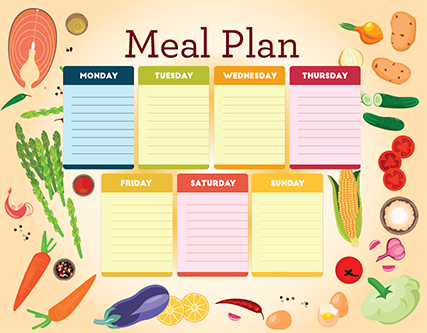
Meal planning can mean different things to different people, but doing some form of it will help you meet your goals. Planning out your meals will save time, stress, and ensure that you eat healthy. The weeks I don’t meal plan are the weeks we eat out more, eat less veggies, and feel sluggish. Here are some ideas you can try:
- Plan out 6-8 weeks worth of meal plans, make grocery lists, and rotate these plans throughout the school year.
- Pick a day and a spend an hour or so prepping things like lunches, snacks, or dinners for the week. If your kids are old enough, teach them to help you!
- Shop online. If you have a grocery store that offers this, order your food online and pick it up. Our store charges a fee of $4.95, but I save way more than that by avoiding impulse buys. You know exactly what you’re getting and how much you will spend. Some stores even deliver for a greater fee.
- Make freezer meals in advance to use on those busy nights.
- Use a meal planning service. You can find a site to fit most dietary needs. These provide weekly meal plans and grocery lists, and help you save time by telling you what to prep in advance.
- Use a website that delivers your meals to your door. Most of them do not use all organic food or Fit Tutor-approved meat, but there are some that use meat without antibiotics.
2. Find An Exercise That You Enjoy

If you hate what you’re doing, you will find every excuse in the world to avoid it. Find a way to exercise that you actually enjoy, and make sure it’s effective for your body, works for your lifestyle, and fits your schedule.
If groups energize you, join a running club or join a fitness class. With each of these you will benefit from the built in accountability and friendships. This would be good for people who can find clubs or classes that fit their schedules.
Back to school can be a busy time, and some may only have time for early morning, late at night, or fast as possible workouts! If you fit that description, we recommend working out at home so you don’t have to drive anywhere and can fit it in around your family’s schedule.
3. Schedule Your Workouts!

Whether or not you get an adrenaline rush from crossing things off a list, most parents need a to-do list and schedule to stay sane. Plan your workout times in advance and put it on a calendar or to-do list. Then use the power of technology to remind you it’s time to exercise!
4. Seek Accountability
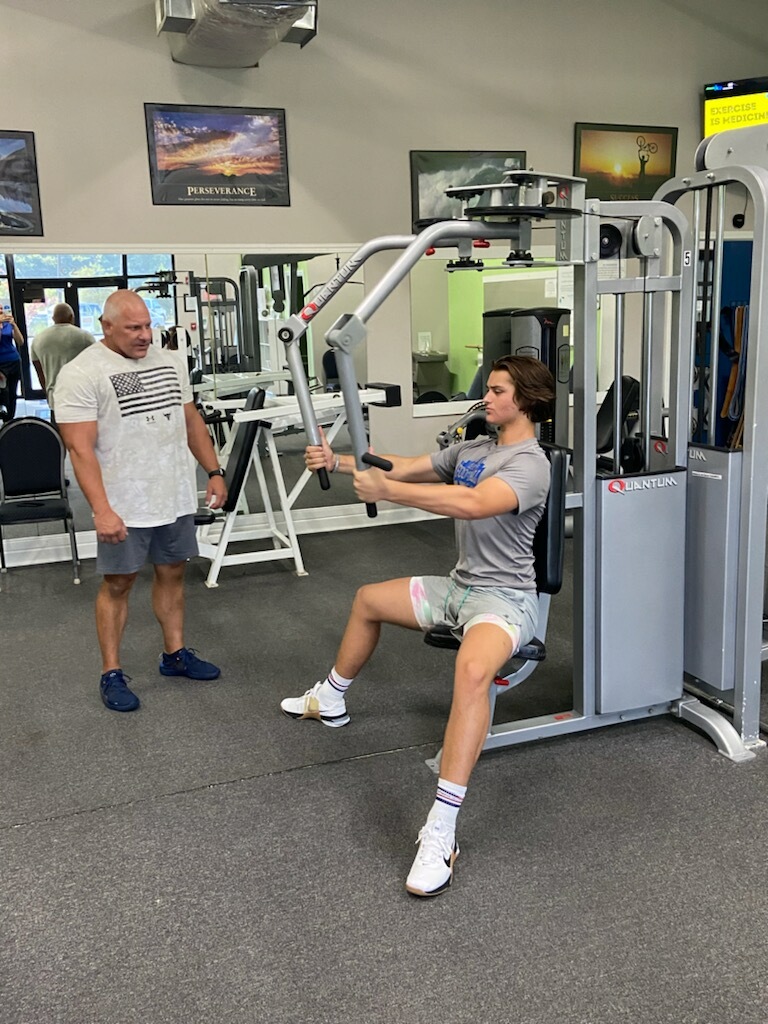
Find a workout buddy. This holds you accountable, makes workouts more enjoyable, and can even create a little fun competition to keep you going. If a workout buddy isn’t an option, find someone to check in with you about your exercising and eating habits such as a personal trainer. Knowing someone will ask is often a good enough motivator.
B.F. Skinner was a brilliant man who taught pigeons to play ping pong, and he knew those same principles of reward and punishment would apply to changing human behavior. There are accountability sites that can reward or punish you based on your progress towards your goals. Find what works for you and get started!
5. PLAY With Your Kids
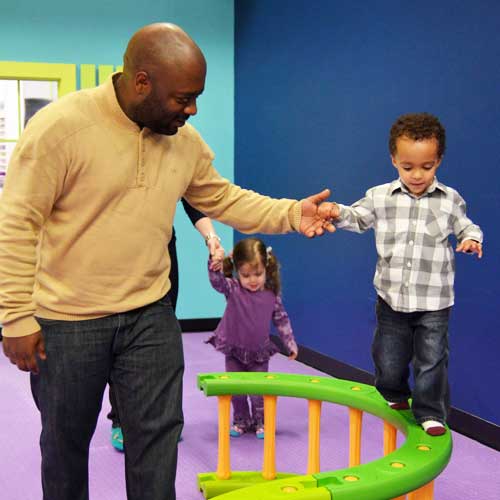
You’ve heard it before and you’ll hear it again. Play with and enjoy your kiddos. If you’re tired and need extra motivation, remember that sitting kills, and even just walking by them while they play on the playground will improve your health.
My parents were always outside playing with us, and our activities changed as we aged. They pushed us on the swings and played in the sandbox with us. As we got older we kicked around a soccer ball, and as we got interested in sports our family times included golf and tennis. My dad would pepper with me for hours in our backyard to help me reach my goal to play collegiate volleyball. Even if you aren’t a pro at sports, rebounding your son’s basketball can be great quality time and a chance for you to MOVE! Bike rides, and walks are also good options.
And finally, do what you can and don’t put stress stress on yourself to be perfect. No one is perfect, even if their Pinterest makes you feel like they are. Remember that your kiddos need a healthy mom if possible, so exercise and eating healthy are great places to start. By making this a priority it will show them a great example. It will also remind them that although you love them to pieces, you’re not their employee and deserve some you time!
Good luck, God speed, and if you’re interested in joining The Fitness Zone or hire one of our personal trainers, we would be happy to answer any questions you may have and help you on this journey! We believe in you!

Physical Fitness 1.5 Times More Effective Than Other Therapies for Mental Health: Study
Earlier in 2023, The University of South Australia conducted a study review encompassing 1,039 studies with over 128,000 participants, which linked physical fitness practices to mental wellness.
Subjects of the studies had varying demographics, a cross-section of the population, not all with a pre-existing diagnosis of a mental health disorder. Any and all kinds of physical fitness practices were included in the studies and noted according to duration and intensity of the exercise. Mental health data was taken and analyzed based on several scales, as well as self-reports.
Here are some findings from the review:
- Exercise has a significant impact on mental health issues and disorders, including anxiety and depression.
- The overall data shows that physical exercise may be 1.5 times more effective than traditional counseling or pharmaceutical intervention.*
- The most significantly impacted populations for positive change include women with chronic illness, pre and post natal women, and people living with HIV.
- Moderate to intense exercise had a more positive impact than lower intensity.
- Exercising 150 minutes or less per week had a more positive impact than more time working out.
- Programmed or prescribed exercise plans of 12 weeks had a more positive impact than not having an exercise plan.
Mental health is important for everyone, not just those diagnosed with a disorder. Most people undergo stress from daily life, or can have temporary bouts of depression and anxiety. This study review shows the positive mental health benefit of physical activity for everyone, not just those in medical care for a diagnosis.
The World Health Organization estimates that mental health disorders rose significantly over the years of 2020-21, with a baseline before the COVID-19 pandemic to be about 12.5% of the global population. That number is unclear in 2023, as some people suffered significant temporary stress, and some continue to struggle. Lifestyle changes have been discussed and suggested for many years around mental health, but this is one of the first studies to show that it may be more effective for some people than counseling, therapy, or medications.*
In addition, because mental health is not seen as a physical symptom in many people, the numbers reported by World Health Organization may be lower than the actual number of people with underlying mental health issues, including many levels of anxiety and depression.
*This study does not imply that people should leave their current practices in therapy, or that they should quit taking their medications. This study quantifies prescribing physical activity as part of a mental health care plan, and shows that lifestyle changes can have a significant impact on people’s mental health. It also shows that people who are not in therapy or taking medication may still get significant positive results from a simple exercise plan.
How to do them and the benefits for building leg strength and muscle
Here’s how to squat properly — and why you should
Squats are the bread-and-butter exercise of lower body strength programs, helping to strengthen and grow muscle in your quads, glutes, hamstrings, hip flexors, lower back and core muscles. But they’re easy to get wrong, and you might not even realize you’re making any mistakes.
Pain in your lower back or joints could indicate that your form might be off, as is “butt winking,” common in beginners or people with limited mobility, causing rounding in the lumbar spine.
But fear not because we’ve drilled down on the squat technique below. Learn how to squat with perfect form, the benefits and common mistakes below.
Squats: Benefits
Squats are a compound exercise that primarily strengthens and builds muscle in your lower body, especially powerhouse muscles like the quads and glutes. Squats take on various forms, from goblet squats to sumo squats, and you could use your bodyweight, resistance bands, the best adjustable dumbbells, barbells or kettlebells.
In short, the options are endless. And other forms, like yogic and Cossack squats, are even used to build flexibility and increase mobility in the lower body, including your back, hips, knees and ankles. Developing more range of motion could help you improve squat depth and maximize the benefits of the exercise.
Squats form a major part of strength training, maximal powerlifting and cardio workouts, so there’s something for everyone. Find out how to test your one rep max here and why it matters for developing your squat potential.
How to squat
Stand with your feet hip or shoulder-width apart. You can position your feet slightly wider
- Point your toes slightly outward at 45 degrees, or forward facing if that’s more comfortable. Engage your core
- Bend your knees and send your hips back as if you’re sitting on a chair directly beneath you
- As you squat down, push your knees outwards so that they track directly over your middle toes and keep the weight distributed through your feet
- Lift your chest, keep looking straight ahead and maintain a flat back. Avoid hunching or rounding your spine
- Lower until your thighs are parallel to the floor, keeping your knees aligned with toes, heels planted and spine neutral, then push through your heels to stand back up.
Squats: Common mistakes
We’ve dedicated whole articles to this one, from limited mobility to lifting too heavy. If you think you could be doing squats wrong, here’s the most common mistake and how to fix it. We’ve also covered butt-winking earlier in this article if that sounds familiar.
But here are the four most common squat mistakes we see summarized below.
Lifting the heels
Limited mobility in the hips, knees or ankles could prevent you from achieving depth in your squat. When this happens, people often shift weight onto the balls of the feet and raise the heels, placing more pressure on their joints.
Keep your heels planted down, creating a tripod foot position. Remember, your feet are the foundation of setting up the squat exercise, so it needs to be solid. Focus on three points of contact — heel, big toe and little toe — distributing the weight evenly across the foot and preventing the knees from turning in.
Knees caving in
As we mentioned, knees turning in is the opposite of what we want to see during squats. Externally rotate the knees by adopting the tripod foot position. Practice turning the knees to track in line with the toes, and notice how your hips open. Now squeeze your glutes to engage them, and reinforce the tripod position by pressing down through your feet.
Butt-winking
Ah, the famous butt-wink. Beginners to the squat or those with tight hips or ankles might find it harder to achieve depth in a squat. Face a mirror side-on, then perform a squat, keeping a close eye on your lower back. If you notice rounding, that’s a butt wink. We cover everything you need to know earlier in this article.
Knees and toes
If you enjoy getting out and about in fitness, chances are, someone has told you it’s “bad” if your knees track over your toes during squats. Untrue. What it really comes down to is flexibility and excessive forward leaning.
If you can lower into a deep squat while keeping your form tight, it isn’t a problem if your knees slightly move past your toes. However, if tracking your knees too far forward and lifting your heels occurs in tandem, it can indicate a lack of flexibility and put stress on your knees.
Besides, everyone is built differently and with varying mechanics. So, focus on lowering directly down toward the floor, sending your hips behind you and hinging at your hips with a tall posture, and avoid leading with your chest; this should help nip excess leaning in the bud.
Was your fitness routine pretty much nonexistent over the summer season?
From holidays, to amusement park visits, to the pool… Summer holidays are go go go go! Combine this with not eating very well, drinking too much alcohol and really having no time to yourself and you’re left feeling drained and far from your best!
Well, time to get excited… It’s back to school time!
This means many hours of uninterrupted ‘ME’ time (lol!). Time to plan on not only using this time to work, but to workout and really making fitness and your self-care a HUGE priority for yourself.
I know that kids activities will soon begin to fill up your calendar so to help fit in some ‘me’ time too, I have come up with some tips for making fitness time a reality so you can be a healthier mama.
MAKE A LIST OF WORKOUTS THAT INTEREST YOU
No one wants to do something that’s boring and working out is no exception to this. In order to keep your motivation up, you need to find things that are fun for YOU.
Whether you can go to a gym or you have to workout at home, there are PLENTY of workouts to choose from.
SCHEDULE YOUR WORKOUTS
Just like anything in life, if you don’t make time for it, chances are it’s not going to happen. At the beginning of your week schedule in WHEN you’ll be working out. Whether it’s first thing in the morning or after the kids are in bed, write it down and stick with it!
IF YOU CAN’T DO A BLOCK, SCHEDULE MINI WORKOUTS
This is something I love to do. Even though I’d much rather go and workout for a hour and be done with it, sometimes that just isn’t possible, so on these days, I like to do a bunch of mini workouts, 10-15 minutes at a time that I can slot into the day. All calories burned will add up so just because you have endless appointments or tons of work to do, don’t let that discourage you from getting a workout in. A few minutes are better that nothing!
GET YOUR FRIENDS INVOLVED
If you have mom friends that are home during the day, get together a group of them (or even just one!) and help to keep each other motivated. Go to a class together or go walk in the park – anything is more fun with friends!
PLAN OUT YOUR MEALS
You plan your kid’s lunches out for school, right? So why should yours be any different! Make a “healthy lunch” board on Pinterest and start spicing up your own lunch routine with some healthy salads, sandwiches or smoothies that will fill your body with the protein and vitamins you need to get through your whole day.
I don’t know about you, but I am thrilled to get back to my fitness routine, and having my kids back in school is going to be the best way for me to get back to being healthier and more fit.
Proper Weight lifting form requires a lot of technique. It is a lot more than just lifting up heavy metal plates. However, if you have been in a gym recently, you have probably noticed a few people with bad form. While it may make you wince, what harm could it really do? Well, actually, bad weightlifting form for whatever lift is being performed could do some serious harm.
1. Prevent Injuries
The main reason that proper weight lifting form is important is to prevent injuries. Improper lifting of heavy weights can easily lead to misaligned tendons, muscles, and joints. When we put our bodies in certain positions under heavy weights, we can cause strains and tears in the tendons and muscles. Additionally, these awkward positions decrease muscle functionality.
If you have to sway to get the weight into position, you should lower the weight you are trying to lift. It is always better to lift lighter weight with the correct form than it is to lift heavier weights with bad form. You should think of this as building up to the weight you want to lift.
Some of the most common injuries caused by improper form are lower back and knee injuries. If you notice pain in these areas after lifting weights, you might want to check your form.
2. Target Specific Muscles
When you aren’t using proper form, you probably aren’t going to be hitting the muscles that you intend to target. In fact, it can be impossible to really work the desired muscles if you have to sway to get the weight where you want it. This can also lead to injuring the muscles that you are trying to target.
3. Ensure Proper Breathing
One underrated aspect of weightlifting that is impacted by bad form is breathing. Proper weight lifting form leads to proper breathing techniques during repetitions. For weight training, this is critical. Proper breathing techniques help generate more force, which reduces severe spikes in blood pressure, aneurysms, and heart problems.
Correct form will help you take air in more easily, and your concentration can be used to focus on the exercise instead of your breath. You should be breathing just before the lift and exhaling as you lower the weight. Try to keep the same pace throughout your set.
4. Reach Goals
If you aren’t using proper weight lifting form, then you probably aren’t working the muscles that you wish to target. This means that you are going to get very little out of your workout. It will take a long time to see your desired results if you aren’t properly working the muscles you intend to strengthen. Bad form causes you to waste a lot of energy on stabilizing your body because your body is trying to protect you from injuries.
Common Form Problems
There are two very common weightlifting form problems. They relate to the core and scapula. Make sure your core is engaged to stabilize the body and protect the spine. You should also be aware of your scapula. A retracted scapula, which occurs when your shoulders are relaxed and down, protects your shoulders and neck during exercise. If you can focus on these two things, you are more likely to lift weights in a safe position.
Different exercises have different risks. It is critical that you know the proper form of all of your exercises to prevent muscle and ligament strains, but keep in mind that a push-up is much different than a squat.
Weightlifting with The Fitness Zone
At The Fitness Zone, our main goal is to teach people proper weightlifting form. While we love having each and every member in our gym, we want to provide life-long skills to everyone who comes through our door, so they are safely lifting weights, whether they are with us or not.
The benefits of weightlifting are numerous, but there are some dangers that arise when proper form isn’t being used. When you work with The Fitness Zone, you can be sure that your trainer will help you work on your forms. This often means retraining the body to use the proper form with every lift.
To get started with the Fitness Zone, give us a call today at 843-663-3900. A member of our staff will help you achieve your fitness goals by starting you out with the right fitness plan for you.
Preventing Injuries in the Gym
Gym-related injuries and strains can occur among people of all fitness levels. Whether you are brand new to exercising or are a frequent flyer at the gym, understanding how to properly work out is essential for injury prevention.
If you’re new to a gym workout or have never worked out before, we recommend getting a session or two with a reputable trainer to walk you through the machines and inform you of what not to do.
A trainer can assist those who are just starting to work out by teaching the correct form and how to prevent injuries. Even one session can be beneficial.
Stretch
While stretching is crucial before and after a workout, there are key differences between your stretch routine before and after exercising. Dynamic stretching before a workout will warm up and loosen up the muscles. Dynamic stretches such as air squats, jumping jacks and lunges will get the blood flowing and muscles moving to prepare for a workout, such as heavy loaded squats.
After your workout is complete, to decrease pressure on the joints, passive stretching is employed to elongate the muscles and to help with relaxation. An example of a passive stretch is lying down on your back with a strap around your foot and pulling your leg up as close to 90 degrees as possible with the knee straight – you will feel a stretch in the back of your thigh (your hamstring). Passive stretching before a workout can lead to injury.
Cool down
Cool down after a workout to let your heart rate calm. If you do interval workouts with a treadmill or stationary bike, cool down by shifting your run to a walk on the treadmill or cycle at a slower pace for about five minutes. Continue with passive stretching at the end of the workout.
Preventative care
A tree analogy for people who are starting to lift weights works great to understanding the importance of preventative care by comparing the human body to a tree. Trees need a strong trunk to grow nice, stable branches just like people need a strong core for lifting heavy weights for arms and legs. Beginners should spend two to four weeks developing a strong core, working the abdominals, glutes and back muscles, before incorporating other lifting exercises in their routine.
Moving up in weight
If you do about 15 repetitions in a weightlifting workout and continue repping with ease, it might be time to increase weight. If you load 50 pounds in a leg press for 15 to 20 reps and can keep going, increase it to 60 pounds. If you can only do about four reps, move it back to the 50 pounds to complete your reps, then rest and start over again. As you get strong, you will be able to move up and keep it at 60 pounds through 15 reps.
Injuries
If you strain a muscle at the gym, stop your workout and put ice on the injury for 15 to 20 minutes. You can ice it throughout the day if you feel sore, then apply a compression sleeve to keep it warm. Visit a physical therapist if you still feel pain after two or three days.
Get educated and get worked on if you need it. You may only need one visit, but a physical therapist can educate you on stretches, proper foam rolling technique and safe exercises to do at the gym.
Powering through the pain
As you get older, arthritis and other conditions may bring discomfort in certain workouts, but as the joints get lubricated, you might feel better. If you feel pain on the first three reps, keep going until you hit the 10th rep. If the pain subsides, the joint just needed lubrication and you can keep exercising. If the pain feels the same or worse by the 10th rep, consult with a physical therapist.
We would never say to power through a sudden pain in a workout.
Compression sleeves
Compression sleeves and wraps provide compression and stability to muscles and joints, keeping them warm during a workout. These are beneficial if you need extra stability or have weakness in the muscles, as well as if you’re recovering from an injury.
We do recommend compression sleeves when you’re recovering, but don’t rely on them forever. Use them at first to get stable and back to normal, then get rid of it.
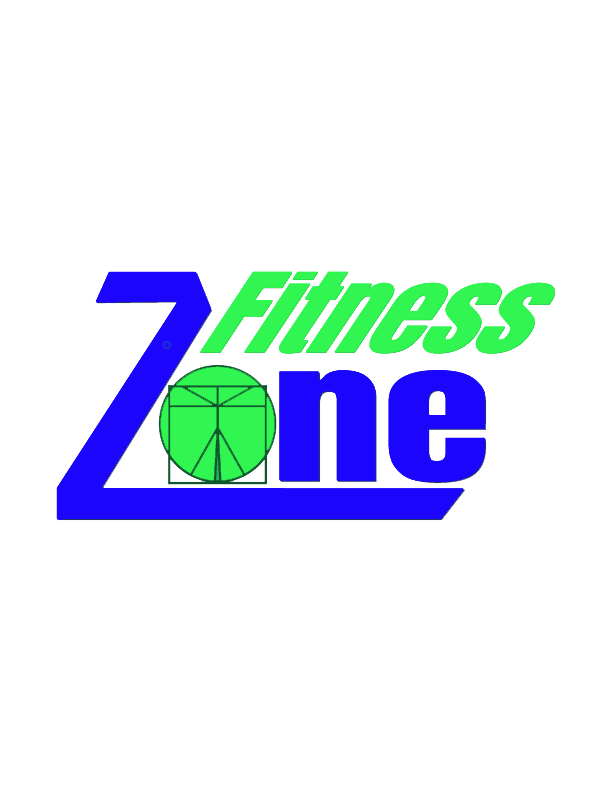

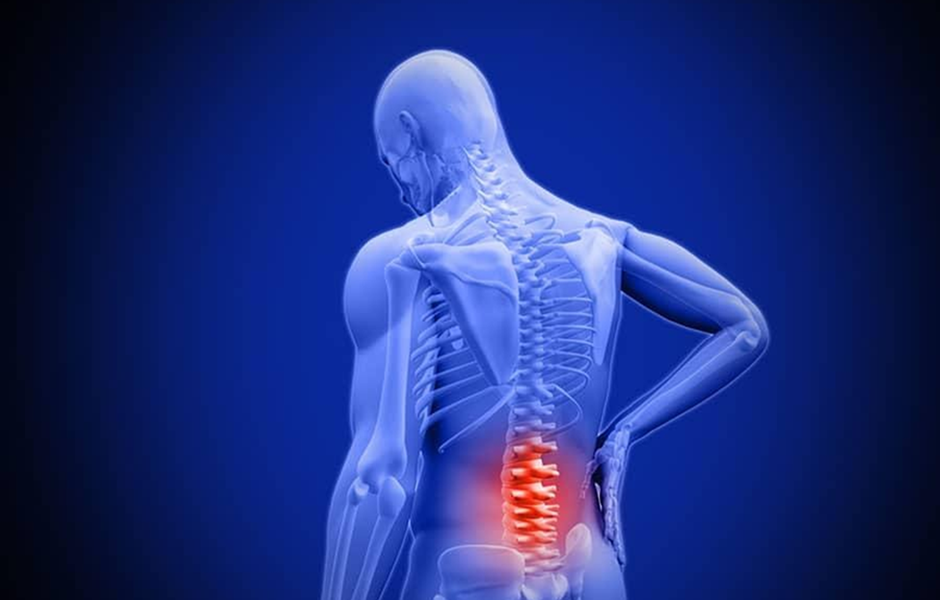
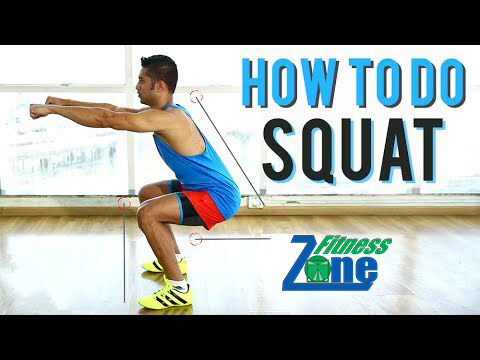
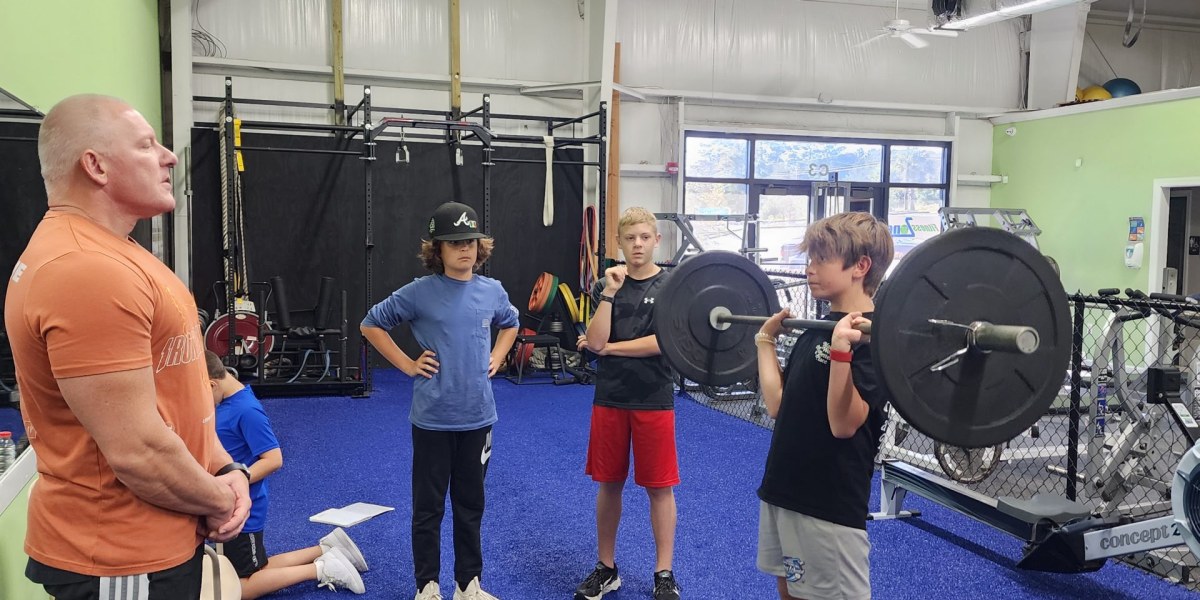


Recent Comments